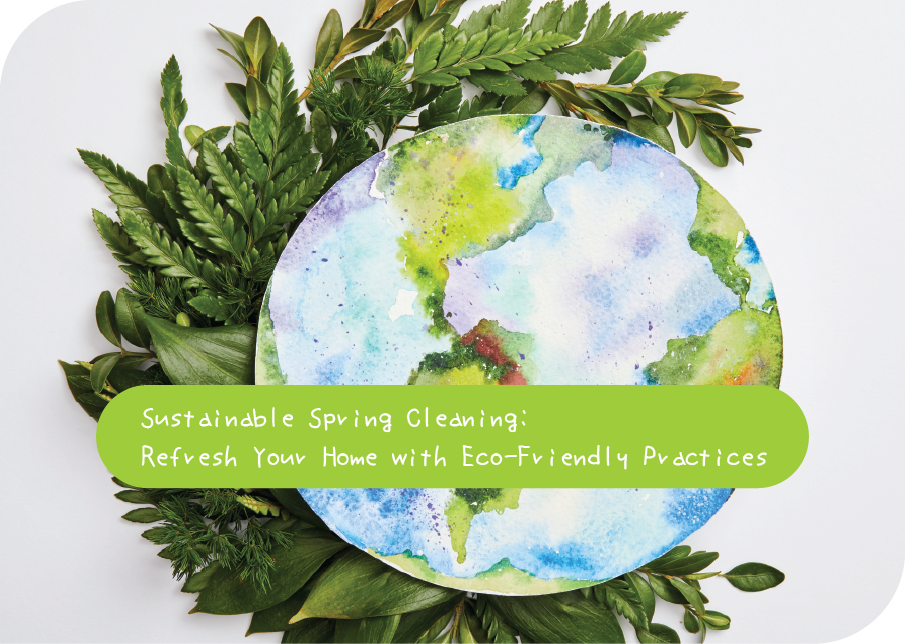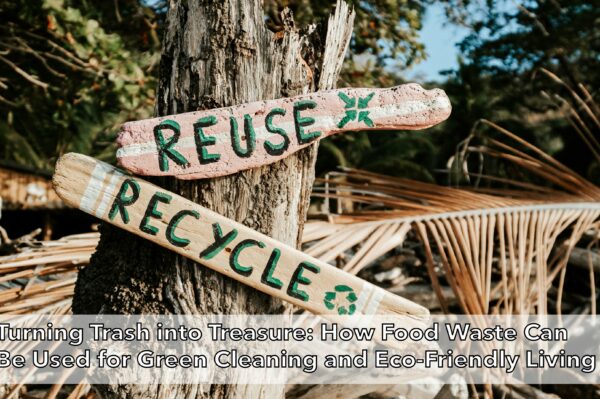Spring cleaning is a time-honored tradition, a chance to refresh your space, eliminate clutter, and deep-clean your home after months of winter. But what if you could take this opportunity to not only clean but also care for the planet? Sustainable spring cleaning goes beyond just tidying up—it’s about using eco-friendly practices and products to reduce your environmental impact while maintaining a healthy home.
In this blog post, we’ll explore how you can green your spring cleaning routine with easy tips, natural ingredients, and sustainable habits that will leave your home sparkling clean and the Earth a little bit healthier.
1. Ditch Harmful Chemicals for Natural Alternatives 🌱
Conventional cleaning products are often packed with harsh chemicals that not only harm your health but also the environment. From ammonia and bleach to artificial fragrances, these substances can pollute both indoor air and water systems when washed down the drain. But the good news is that there are natural, eco-friendly alternatives that are just as effective!
DIY Cleaning Solutions:
- All-purpose cleaner: Mix equal parts white vinegar and water in a spray bottle. Add a few drops of essential oil (such as lemon or lavender) for a fresh scent.
- Glass cleaner: Combine 1 cup of water, 1 cup of vinegar, and 1 tablespoon of cornstarch in a spray bottle. This solution will leave your windows streak-free without the harmful chemicals.
- Disinfectant: Use hydrogen peroxide (3%) as a natural disinfectant. It’s effective at killing germs and bacteria without causing harm to the environment.
Why it matters: By switching to these non-toxic, natural cleaners, you reduce the number of chemicals in your home and limit your contribution to water and air pollution. Plus, you’ll breathe easier knowing your cleaning products are safe for you, your family, and your pets.
2. Embrace Zero-Waste Cleaning Tools 🧹
The cleaning tools you use can also have a significant impact on the environment. Single-use products like paper towels and disposable wipes create a lot of waste that ends up in landfills. This spring, try switching to reusable and eco-friendly alternatives that reduce waste and are built to last.
Eco-friendly cleaning tools:
- Microfiber cloths: These cloths are highly effective at cleaning and can be used repeatedly without the need for paper towels.
- Bamboo cleaning brushes: Made from sustainable bamboo, these brushes are an excellent alternative to plastic scrubbers and brushes.
- Reusable mop pads: Instead of disposable mop refills, choose a mop with washable pads to cut down on waste.
Why it matters: Reusable cleaning tools are durable, long-lasting, and help you cut down on single-use plastics. By making the switch, you’ll contribute less to plastic pollution and minimize your carbon footprint.
3. Conserve Water While Cleaning 💧
Water conservation is another important aspect of sustainable spring cleaning. Traditional cleaning habits often waste large amounts of water, especially when washing floors, windows, or doing laundry. Fortunately, small changes in your cleaning routine can significantly reduce water consumption.
Water-saving tips:
- Use a bucket instead of a running hose when washing windows or floors.
- Wash full loads of laundry to avoid wasting water on half-empty machines.
- Use a damp microfiber cloth to clean surfaces instead of running water continuously.
Why it matters: Water is a precious resource, and reducing water waste helps ensure its availability for future generations. By making simple changes to how you clean, you’re helping conserve water and supporting a more sustainable lifestyle.
4. Opt for Eco-Friendly Laundry Practices 🧺
Laundry day is another area where you can make a big environmental impact. Conventional laundry detergents are often packed with chemicals and packaged in plastic bottles. Luckily, there are plenty of eco-friendly alternatives that clean just as well while protecting the environment.
Eco-friendly laundry tips:
- Choose biodegradable detergents made from plant-based ingredients.
- Use a laundry ball or reusable dryer balls instead of dryer sheets to reduce waste and save energy.
- Wash clothes in cold water to save energy and help your clothes last longer.
Why it matters: By choosing eco-friendly laundry products and practices, you reduce your household’s environmental footprint while keeping your clothes clean and fresh.
5. Go Green with Waste Disposal ♻️
Spring cleaning often leads to the disposal of old items, including expired cleaning products, broken tools, or unwanted household goods. Make sure you dispose of them responsibly by recycling or reusing as much as possible.
Waste-reducing tips:
- Recycle packaging and cleaning product containers.
- Donate gently used household items or furniture instead of throwing them away.
- Compost organic waste, such as food scraps or paper towels, when possible.
Why it matters: Reducing waste and promoting responsible disposal practices are key components of an eco-friendly lifestyle. By recycling, donating, and composting, you can keep unnecessary waste out of landfills.
Conclusion: A Greener, Healthier Spring Starts with You 🌍
Sustainable spring cleaning is more than just a trend—it’s a way of living that promotes a healthier planet and a healthier home. By making simple, eco-friendly choices in your cleaning routine, you can reduce your environmental impact, save money, and create a safer, cleaner environment for you and your loved ones.
This spring, let’s take action and go green in every aspect of our cleaning habits. A healthier planet begins with small changes, and it starts with you.



